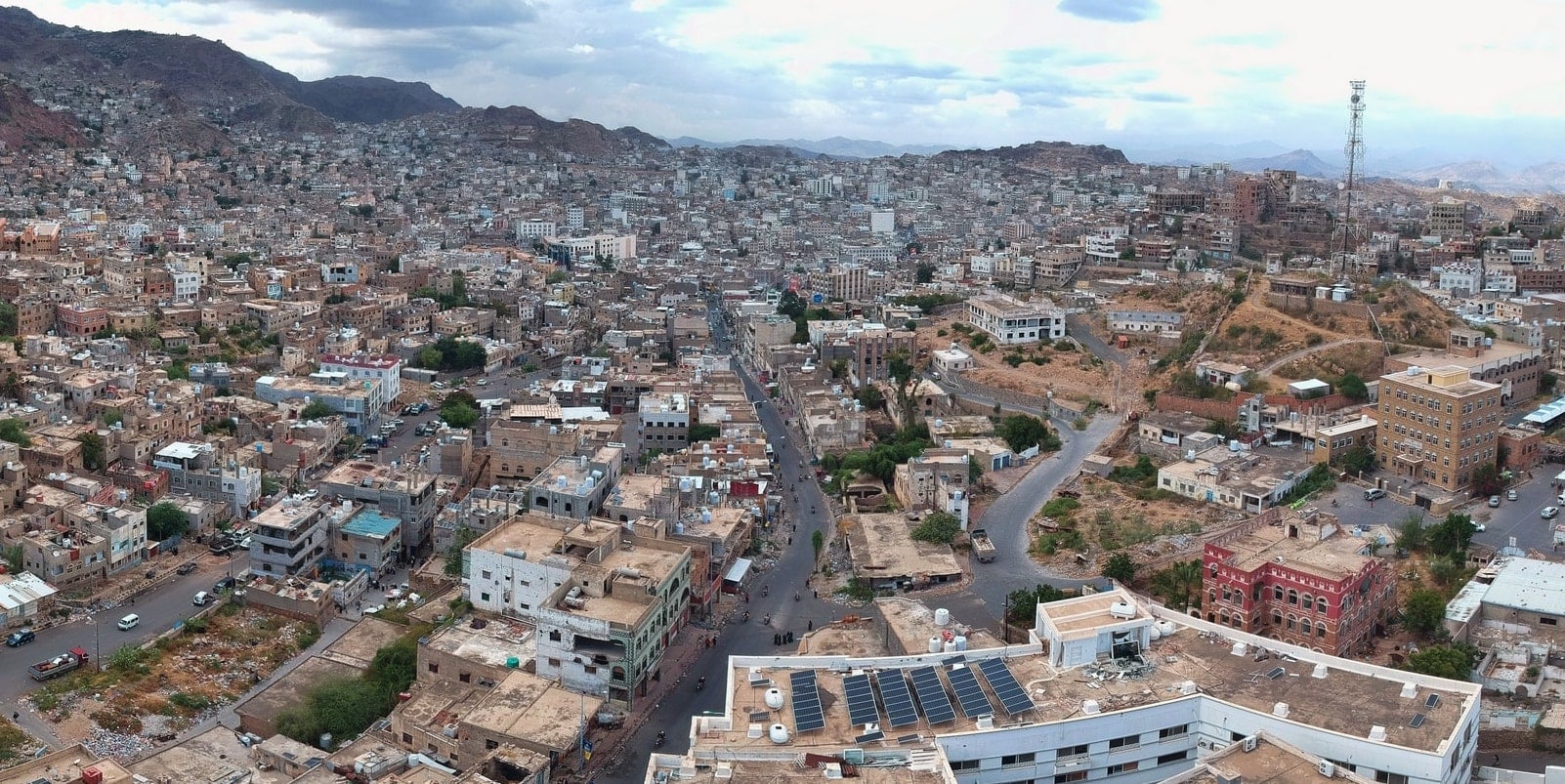
The city of Taiz, July 2022, Anas Al-haj
Last updated on: 23-07-2023 at 11 AM Aden Time

The Houthis blocked the main Al-Hawaban road and others. This pushed people to resort to debilitating bumpy roads that take hours to move between the areas controlled by the internationally-recognized government and those under the Houthi grip.
Hesham Srhan (South24)
3000 days passed since the Houthis militia imposed a siege on Taiz which caused a multi-level humanitarian crisis.
The Houthis blocked the main Hawaban road and others. This pushed people to resort to debilitating bumpy roads that take hours to move between the areas controlled by the internationally-recognized government and those under the Houthi grip.
The siege has hindered the flow of goods, medicine and gas causing great suffering to people at both sides. This is in addition to the acts of war, especially by the Houthi fighters. Including clashes and sniping.
Severed arteries
The Houthis have blocked main roads such as Al-Hawaban, Jawlat Al-Kasr (east of Taiz), Jawlat Sofitel (east of Al-Arbaeen) and Al-Siteen. They are short and paved roads and serve as main lifelines in Taiz to supply goods, medical commodities, fuel and humanitarian aid. Moreover, Al-Hawaban, controlled by the Houthis, serves as the Taiz's economic gateway.
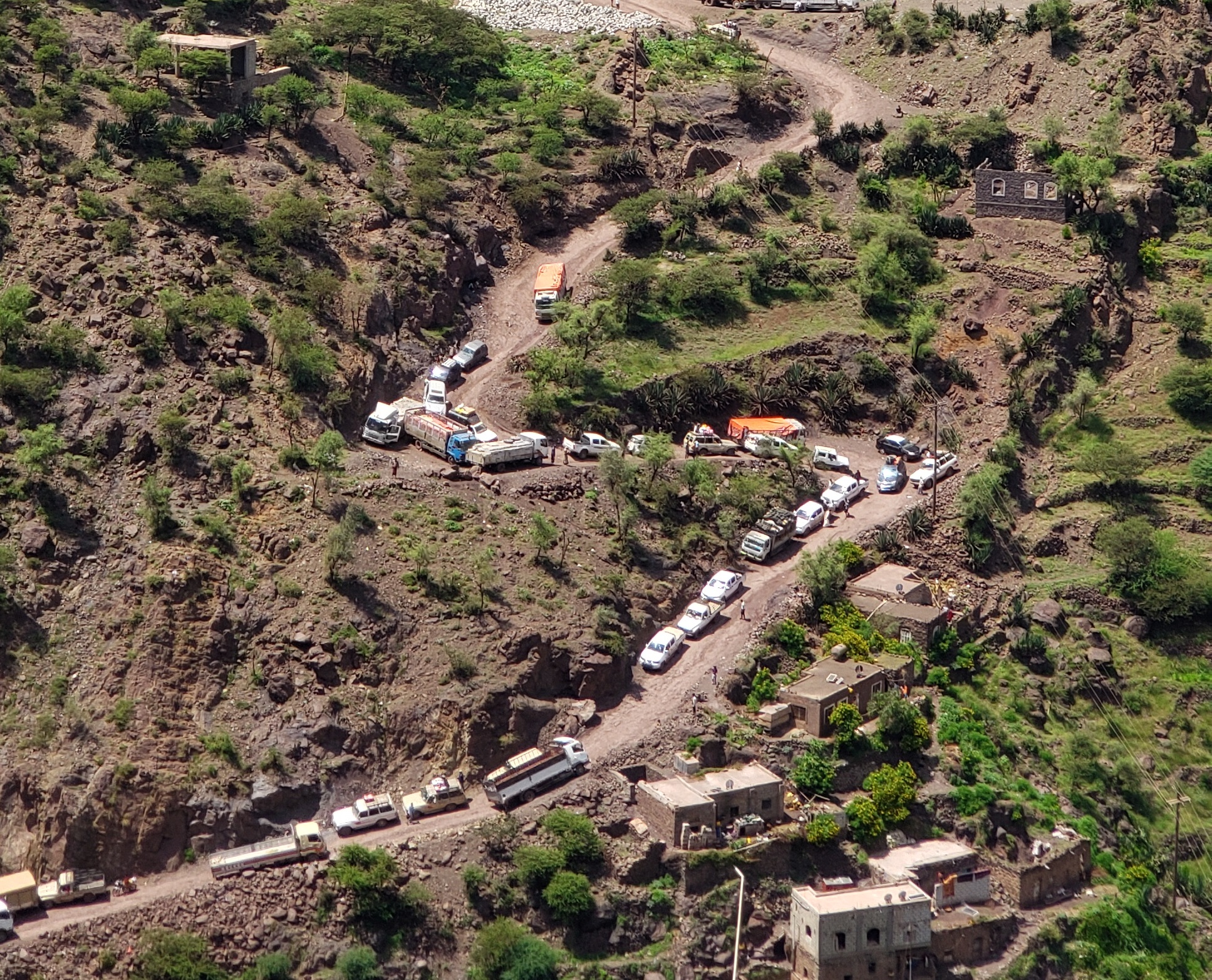
Alternative dusty road in Uzlat Al-Aqrod, Al-Misrakh District, Taiz, October 2022 (South24 Center)
Millions in Taiz and the surrounding countryside in 7 districts including Salh, Al-Mudhaffar, Al-Qahirah, Jabal Habashy, Maqbansh, Al-Taiziyah and Sabir Al Mawadim are under siege. These areas have become fully isolated from those controlled by the Houthis in the north, east and west of Taiz.
Moreover, road blocking has isolated these governmental areas from the neighboring governorates of Taiz such as Ibb and Hodeidah as well as Al-Dhalea and Lahj in South Yemen.
Dangerous alternatives
To escape this big prison, people are forced to move through long and mountainous roads such as "Al-Aqrod" (west of Sabir), Jabal Habashy and a third road that passes through Samea district. The latter is used in case of blocking the first two roads according to driver Abdullah Kamel who spoke to "South24 Center".
The dangerous Al-Aqrod is 60 km long. It connects the besieged city of Taiz with Al-Hawaban in the east. It is a mountainous road that passes through Al-Aqrod area and Taluq Mountains, located south of the city and its lower valleys.
The travelers of this road pass through a vast geographical area with varying terrain. The trip starts with Al-Dabav area in the west of the city. It then passes through Najd Qassim in Al-Misrakh district, Al-Aqrod in Sabir Al Mawadim, Dimnat Khadir, Al-Rahidah, Naqil Al-Ebil and Al-Hawaban.
The Jabal Habashy-Sharaab junction road passes through Al-Dabab, Jabal Habashy junction, Al-Saelah, towering Habashy Mountain, Sarlat Al-Saeam, Al-Akhlod, Al-Eyar, Hajdah, Al-Ramada, Al-Rabeei and Sharaab junction which leads to several other districts.
These alternative roads lack barriers, mobile services, rescue teams and traffic signs. They also need maintenance.
The Haijat Al-Abd road which connects Taiz with Lahj is considered the only lifeline that supplies Taiz with different life needs such as food products after the Houthis closed other passages in the areas under their control near Lahj. However, this road is also dangerous and bumpy and has witnessed many accidents.
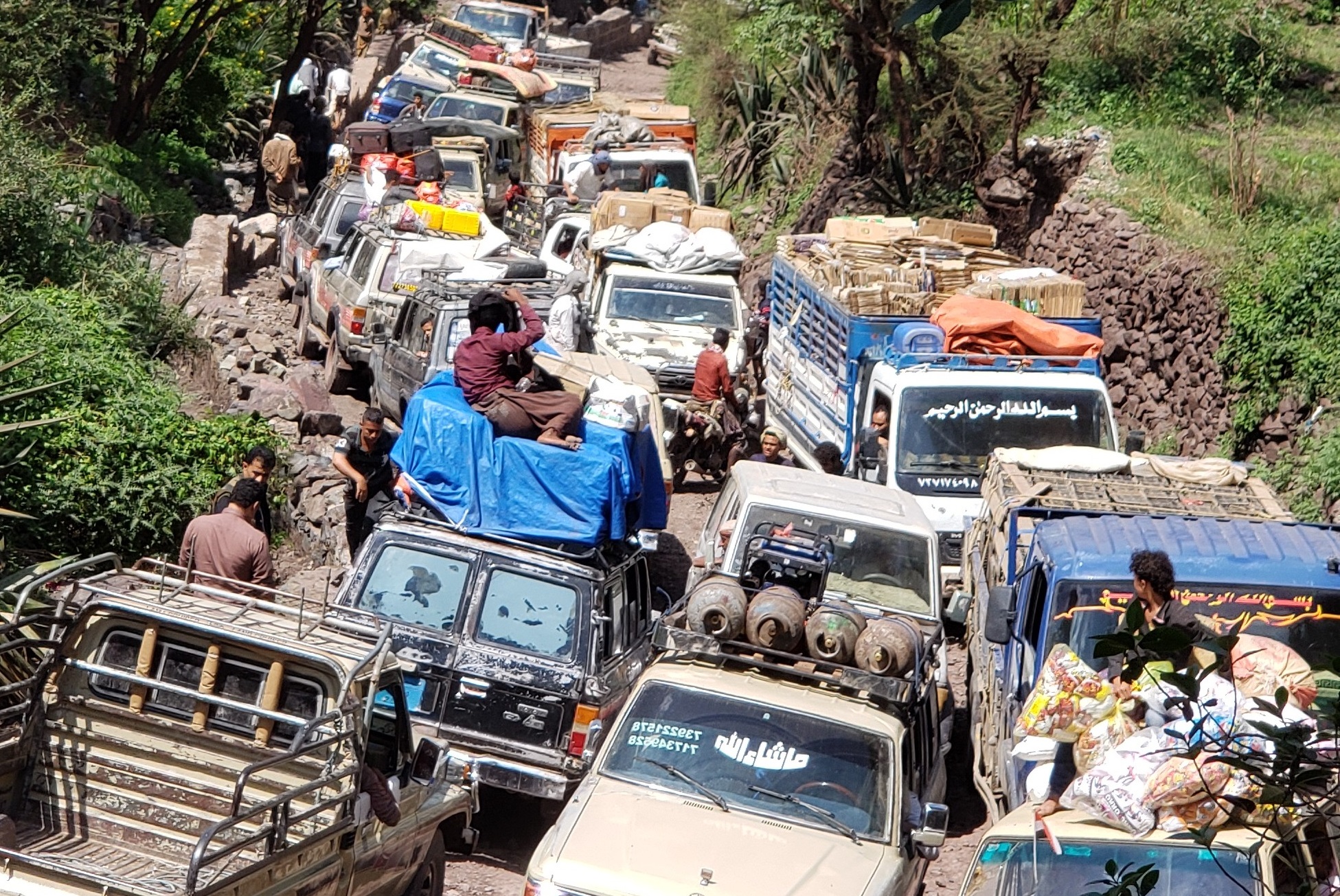
Alternative dusty road in Uzlat Al-Aqrod, Al-Misrakh District, Taiz, October 2022 (South24 Center)
Major burdens
Government employee Naif Abdullah told "South24 Center": "My trip to Al-Hawaban took only less than 15 min. It was comfortable, short, less dangerous and cheap. I used to pay only 100 riyals. However, all of that changed years ago and I am no longer able to do so. I currently have to pass through dangerous roads for 7 hours in 4x4 cars. The cost of taxis are about 15,000 Yemeni riyals (new government edition of riyal) or 8000 Yemeni riyals (old edition in areas under Houthi control)".
Banana seller in Taiz Aref Al-Sabee told "South24 Center": "Before the Houthis closed the roads, I used to visit my family at the end of each week. Since they were closed years ago, my visits were reduced to only one each year, particularly in Eid Al-Adha feast. This year, I didn't even make this visit due to the high transportation costs".
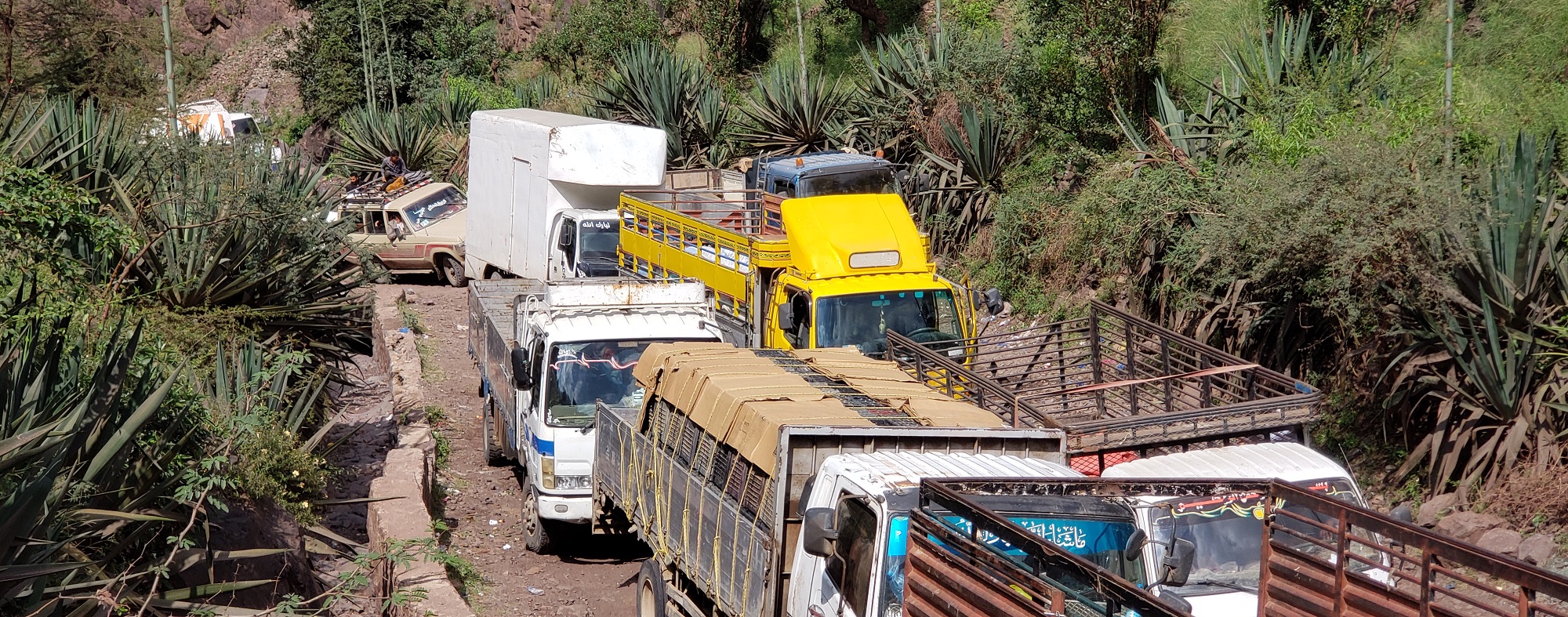
Alternative dusty road in Uzlat Al-Aqrod, Al-Misrakh District, Taiz, October 2022 (South24 Center)
College student Motasem Khaled said that many of his colleagues in the Houthi-controlled areas stopped studying in Taiz University and other private universities in the government areas.
He told "South24 Center": "It is impossible for the students' families to afford transportation costs ".
First Undersecretary of Taiz governorate Dr. Abdul Qawi Al-Mikhlafi said that closing roads has created a severe water crisis in the city.
He told "South24 Center": "Closing roads has increased the price of food and medical products. It has also deepened the environmental threats because the Houthis refuse transferring waste from the besieged areas to the only waste dump west of the city in their areas of control".
Director of the Office of Planning and International Cooperation in Taiz, Nabil Jamil, who is a member of the government committee concerned with road-opening negotiations, told "South24 Center": "The ongoing blockade has repercussions on the economic, humanitarian, health and psychological levels. If we look at the economic aspect, we find that there are massive ramifications".
He added: "As a result of the blockade, some services such as electricity are no longer available. The main justification for that is the inability to transport large generators through the Haijat Al-Abd road".
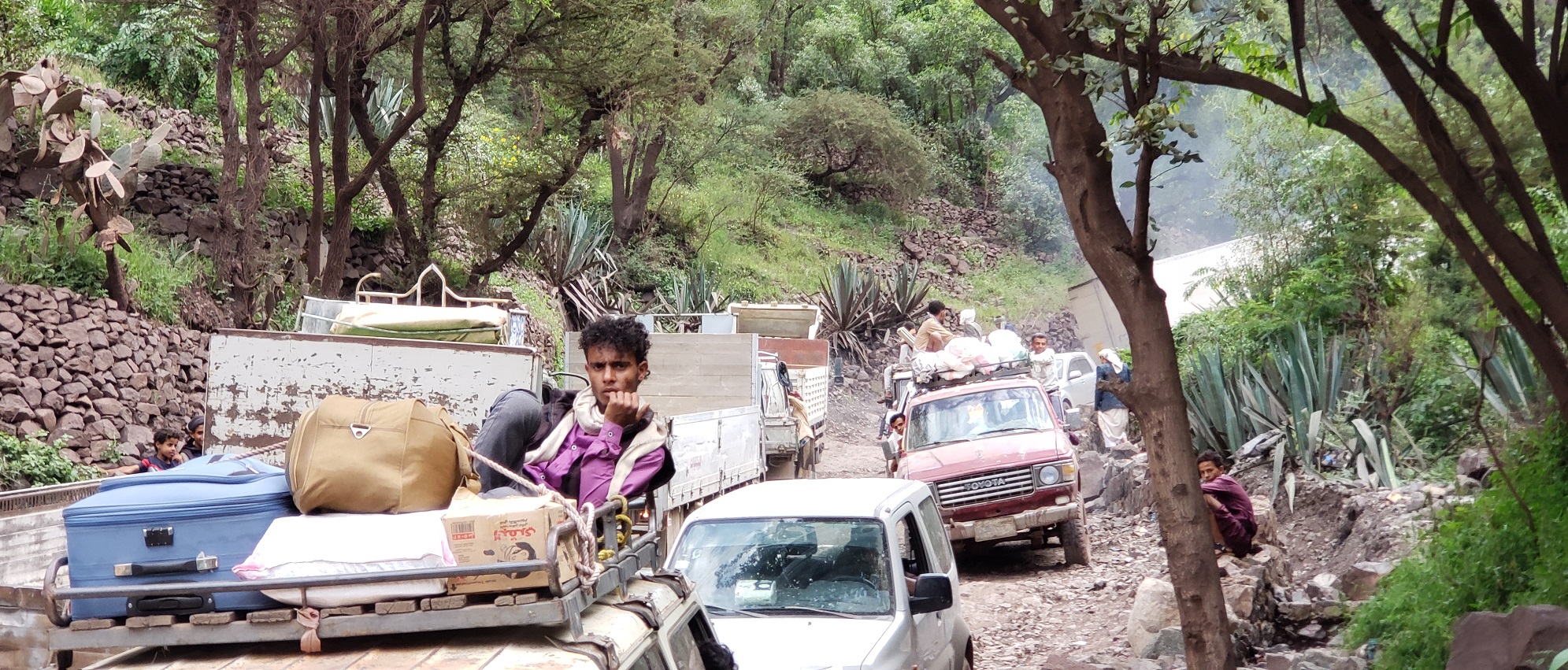
Alternative dusty road in Uzlat Al-Aqrod, Al-Misrakh District, Taiz, October 2022 (South24 Center)
Accompanied by death
Tribal leader Abdulhakim Al-Sofiani said: "The bumpy Jabal Habashy road caused several accidents and many cars were overturned, which caused huge material and human casualties."
A report, published by "Rights Radar" said: "Between January 2017-June 2022, 87 traffic accidents in Taiz's alternative roads killed 90 persons and injured 388 with a total loss of 150 million Yemeni riyals".
The rate of danger increases during summer and rainy seasons as floods inundate the big holes in these roads and sweep part of them in a way they increase fatal challenges".
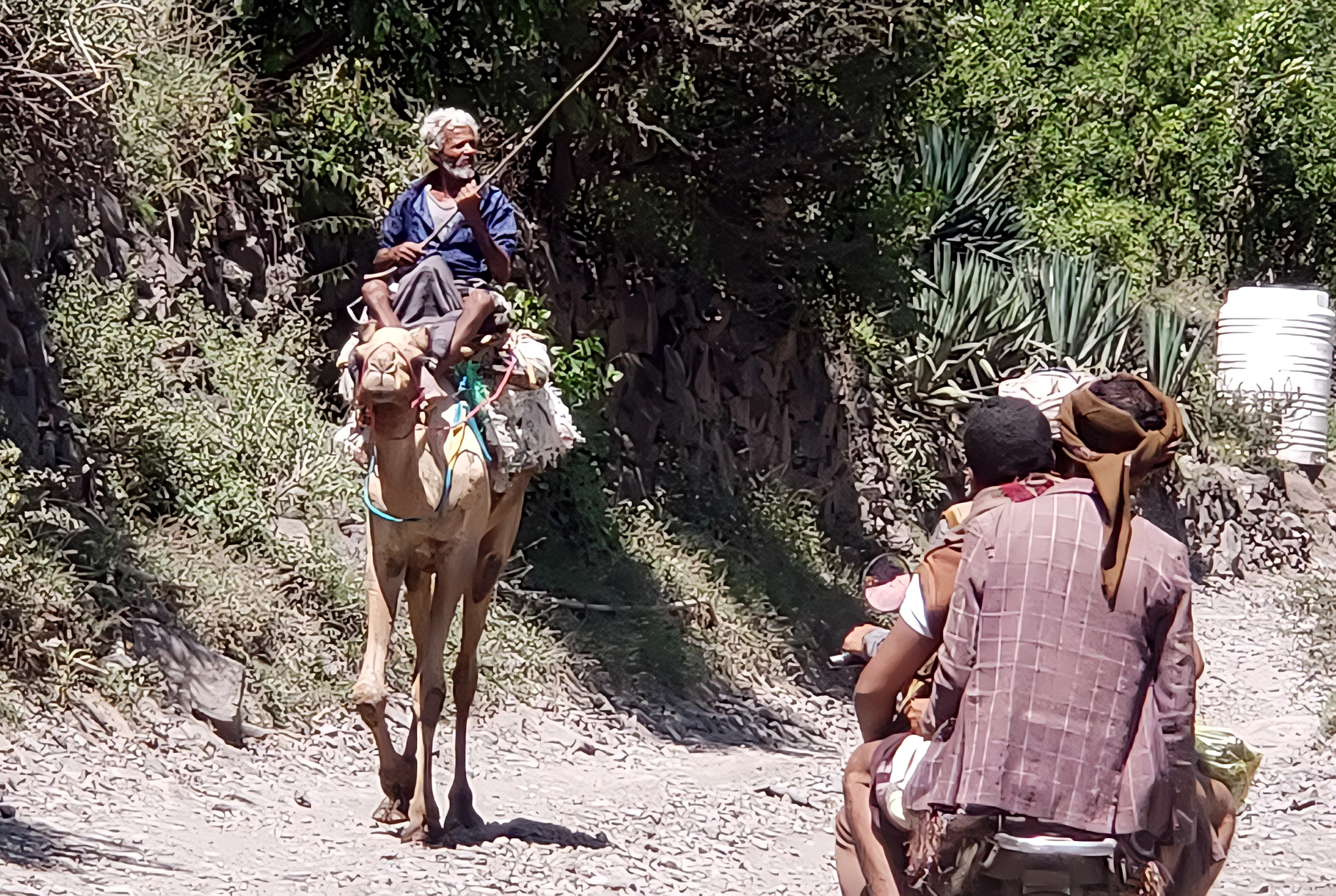
Alternative dusty road in Uzlat Al-Aqrod, Al-Misrakh District, Taiz, October 2022 (South24 Center)
Abd Al-Sharifi, who transfers passengers in a saloon car, waited 4 hours in the Jabal Habashy Road last year till floods stopped in order to resume his journey. He said that he was scared most by the screams of children and women who feared that floods could sweep his car".
Houthis checkpoints
The Houthis didn’t only besieged and blocked roads in Taiz as their security checkpoints in the alternative roads made several violations including arrests, detainment, intimidation and blundering money sometimes according to locals who spoke to "South24 Center".
Young Ahmed Abdullah recalled his experience in a Houthi security checkpoint saying: "Houthi gunmen took me to a wooded area to investigate me after they suspect that I belong to the government’s forces. One of them told me they will take me to Al-Saleh Prison (Houthi detention center in Al-Hawaban) and that I won't see the sun there".
Young Bakr Al-Hamidi was beaten and looted in a Houthi checkpoint. He told "South24 Center": "Some members of the militia accused him of delivering money to their government rivals before they beat and looted him".
Health tragedy
The tragedy of closing roads in Taiz is clearer in the health sector as people in the areas under the Houthi control find massive difficulties to reach the public Thawra Hospital and the dialysis center which is the only one in the government-controlled areas".
Leukemia patient Hassan Ahmed failed to reach the Amal Center for treating leukemia in the proper time because of the bumpy road and transportation costs. His son Hashim told "South24 Center" that his father suffered relentless pain for long days before he finally arrived at the center but it was too late due to his critical case. His body didn't respond to any treatment and he finally died.
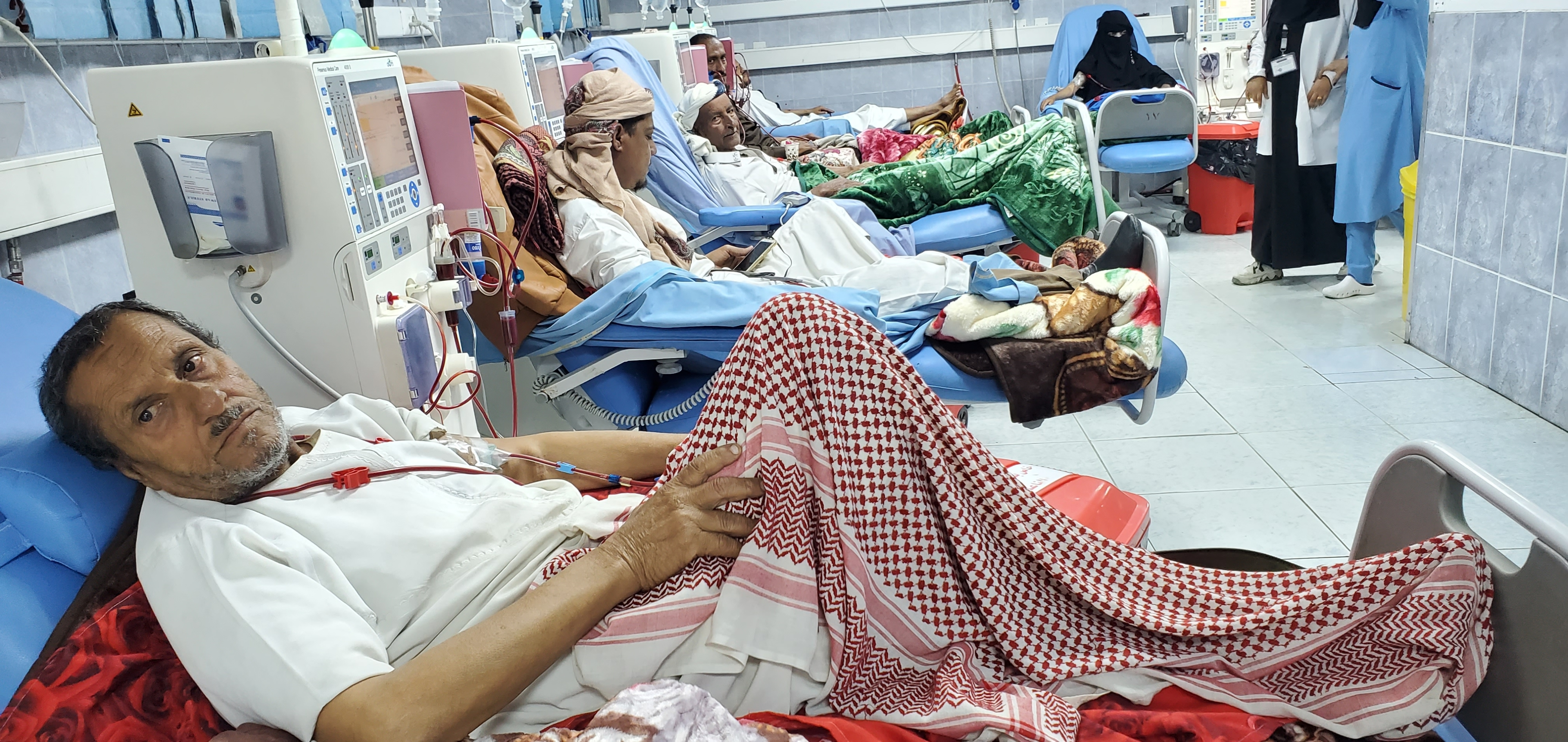
Patients in the dialysis center affiliated with the public Thawra Hospital in Taiz, January 2023 (South24 Center)
During the Covid-19 Pandemic, people in the Houthi-controlled areas faced big difficulties in reaching the vaccination centers that were in the government area, especially expatriates in Saudi Arabia and other countries who were in urgent need of taking vaccine doses.
Continuous calls
On July 13, Yemeni activists launched a hashtag (#) for (Taiz 3000 days of siege) demanding the re-opening of roads in the city and lifting the blockade imposed by the Houthis. Taiz Governor Nabil Shamsan called for interaction with the campaign saying that 4 million people suffer from the Houthi siege.
The Taiz Governor inaugurated the Documentation Week of the Memory of the City coinciding with 3000 days of the siege. He said that the blockade caused a water crisis that hit 75% of the population and destroyed 50% of the road network.
He indicated that the traffic accidents during the blockade are 481 which killed 374 and injured 966 with total losses about 475 million dollars. Shamsan called on the United Nations and the international community to “stop this suffering and collective punishment by pressuring the Houthi militia to lift the siege.
The Chairman of the Presidential Leadership Council (PLC) Rashad Al-Alimi stressed that the issue of lifting the siege on Taiz “is a top priority in the paths of peace and military deterrence”. PLC Member and the Commander of the National Resistance Tariq Saleh vowed that the Houthi blockade will be broken by the guns of men.
Hesham Srhan
Yemeni journalist in Taiz governorate
Previous article